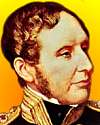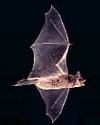| Sushi for peccaries? Posted: 29 Apr 2013 02:59 PM PDT It turns out the white-lipped peccary —- a piglike animal from Central and South America —- will settle for fish when fruits (its main food) are no longer on the menu, according to researchers revealing the first-ever photos of fish-eating peccaries.  |
| Smoke signals: How burning plants tell seeds to rise from the ashes Posted: 29 Apr 2013 02:59 PM PDT In the spring following a forest fire, trees that survived the blaze explode in new growth and plants sprout in abundance from the scorched earth. For centuries, it was a mystery how seeds, some long dormant in the soil, knew to push through the ashes to regenerate the burned forest.  |
| Microchip proves tightness provokes precocious sperm release Posted: 29 Apr 2013 01:47 PM PDT Sperm cell release can be triggered by tightening the grip around the delivery organ, according to a team of nano and microsystems engineers and plant biologists.  |
| World's longest-running plant monitoring program now digitized Posted: 29 Apr 2013 12:42 PM PDT Researchers have digitized 106 years of growth data on the birth, growth and death of individual plants on Tumamoc Hill in Tucson, Ariz., making the information available for study by people all over the world. The permanent research plots on the University of Arizona's Tumamoc Hill represent the world's longest-running study that monitors individual plants. Knowing how plants respond to changing conditions over many decades provides new insights into how ecosystems behave.  |
| Sea turtles benefiting from protected areas Posted: 29 Apr 2013 12:42 PM PDT Nesting green sea turtles are benefiting from marine protected areas by using habitats found within their boundaries, according to a new study that is the first to track the federally protected turtles in Dry Tortugas National Park.  |
| Cat and mouse: One gene is necessary for mice to avoid predators Posted: 29 Apr 2013 12:41 PM PDT A new study involving olfactory receptors provides evidence that a single gene is necessary for a mouse to avoid a cat. A research team has shown that removing one olfactory receptor from mice can have a profound effect on their behavior. The gene, called TAAR4, encodes a receptor that responds to a chemical that is enriched in the urine of carnivores. While normal mice innately avoid the scent marks of predators, mice lacking the TAAR4 receptor do not.  |
| First snapshot of organisms eating each other: Feast clue to smell of ancient Earth Posted: 29 Apr 2013 12:41 PM PDT Tiny 1,900-million-year-old fossils from rocks around Lake Superior, Canada, give the first ever snapshot of organisms eating each other and suggest what the ancient Earth would have smelled like.  |
| Cicadas get a jump on cleaning Posted: 29 Apr 2013 12:41 PM PDT As cicadas on the East Coast begin emerging from their 17-year slumber, a spritz of dew drops is all they need to keep their wings fresh and clean.  |
| Dinosaur predecessors gain ground in wake of world's biggest biodiversity crisis Posted: 29 Apr 2013 12:40 PM PDT Newly discovered fossils from 10 million years after Earth's greatest mass extinction reveal a lineage of animals thought to have led to dinosaurs taking hold in Tanzania and Zambia in the mid-Triassic period, many millions of years before dinosaur relatives were seen in the fossil record elsewhere on Earth.  |
| No Redoubt: Volcanic eruption forecasting improved Posted: 29 Apr 2013 10:37 AM PDT Forecasting volcanic eruptions with success is heavily dependent on recognizing well-established patterns of pre-eruption unrest in the monitoring data. But in order to develop better monitoring procedures, it is also crucial to understand volcanic eruptions that deviate from these patterns. New research retrospectively documented and analyzed the period immediately preceding the 2009 eruption of the Redoubt volcano in Alaska, which was characterized by an abnormally long period of pre-eruption seismic activity that's normally associated with short-term warnings of eruption.  |
| Singing humpback whales tracked on Northwest Atlantic feeding ground Posted: 29 Apr 2013 10:36 AM PDT Male humpback whales sing complex songs in tropical waters during the winter breeding season, but they also sing at higher latitudes at other times of the year. NOAA researchers have provided the first detailed description linking humpback whale movements to acoustic behavior on a feeding ground in the Northwest Atlantic.  |
| U. S. has surprisingly large reservoir of crop plant diversity Posted: 29 Apr 2013 10:35 AM PDT North America isn't known as a hotspot for crop plant diversity, yet a new inventory has uncovered nearly 4,600 wild relatives of crop plants in the United States, including close relatives of globally important food crops such as sunflower, bean, sweet potato, and strawberry.  |
| Many stressors associated with fracking due to perceived lack of trust Posted: 29 Apr 2013 10:05 AM PDT Pennsylvania residents living near unconventional natural gas developments using hydraulic fracturing, known by the slang term "fracking," attribute several dozen health concerns and stressors to the Marcellus Shale developments in their area, according to a long-term analysis.  |
| Comparing proteins at a glance: Technique for easy comparisons of proteins in solution Posted: 29 Apr 2013 10:05 AM PDT A revolutionary X-ray analytical technique enables researchers at a glance to identify structural similarities and differences between multiple proteins under a variety of conditions and has already been used to gain valuable new insight into a prime protein target for cancer chemotherapy.  |
| Elucidating environmental history with 100 million laser beams Posted: 29 Apr 2013 08:47 AM PDT By combining high-resolution surface data obtained from laser scanning with subsurface geodata, scientists have succeeded for the first time in providing a full picture of so-called karst depressions on the island of Crete, including a three-dimensional view into the subsurface structure of these funnel-shaped hollows.  |
| Grocery delivery service is greener than driving to the store Posted: 29 Apr 2013 06:51 AM PDT Engineers have found that using a grocery delivery service can cut carbon dioxide emissions by at least half when compared with individual household trips to the store. Trucks filled to capacity that deliver to customers clustered in neighborhoods produced the most savings in carbon dioxide emissions.  |
| Fertilizers provide mixed benefits to soil in 50-year study Posted: 29 Apr 2013 06:46 AM PDT In a Kansas study, 50 years of inorganic fertilization increased soil organic carbon stocks but failed to enhance soil aggregate stability —- a key indicator of soil structural quality that helps dictate how water moves through soil and the soil's resistance to erosion.  |








 Eugen Bleuler, born 30 Apr 1857, was a Swiss psychiatrist, who introduced the now current term (1908) to describe the disorder previously known as dementia praecox. For his studies of this disorder, he was one of the most influential psychiatrists of his time.
Eugen Bleuler, born 30 Apr 1857, was a Swiss psychiatrist, who introduced the now current term (1908) to describe the disorder previously known as dementia praecox. For his studies of this disorder, he was one of the most influential psychiatrists of his time. What name did Bleuler give to dementia praecox, by which is now known?
What name did Bleuler give to dementia praecox, by which is now known?
 Robert Fitzroy (1805-1865) was the British naval officer who commanded the round the world voyage on which Charles Darwin sailed as the ship's naturalist. That voyage provided Darwin with much of the material on which he based his theory of evolution. When Fitzroy retired he devoted himself to meteorology. He devised a storm warning system that was the prototype of the daily weather forecast, invented a barometer, and published The Weather Book (1863).
Robert Fitzroy (1805-1865) was the British naval officer who commanded the round the world voyage on which Charles Darwin sailed as the ship's naturalist. That voyage provided Darwin with much of the material on which he based his theory of evolution. When Fitzroy retired he devoted himself to meteorology. He devised a storm warning system that was the prototype of the daily weather forecast, invented a barometer, and published The Weather Book (1863). 
 On 30 Apr 1960, the oldest banded U.S. bat was identified, from the date read on the band. It was a female little brown bat (the most abundant bat species in the U.S.)
On 30 Apr 1960, the oldest banded U.S. bat was identified, from the date read on the band. It was a female little brown bat (the most abundant bat species in the U.S.) If you enjoy this newsletter, the website, or wish to offer encouragement or ideas, please
If you enjoy this newsletter, the website, or wish to offer encouragement or ideas, please 
